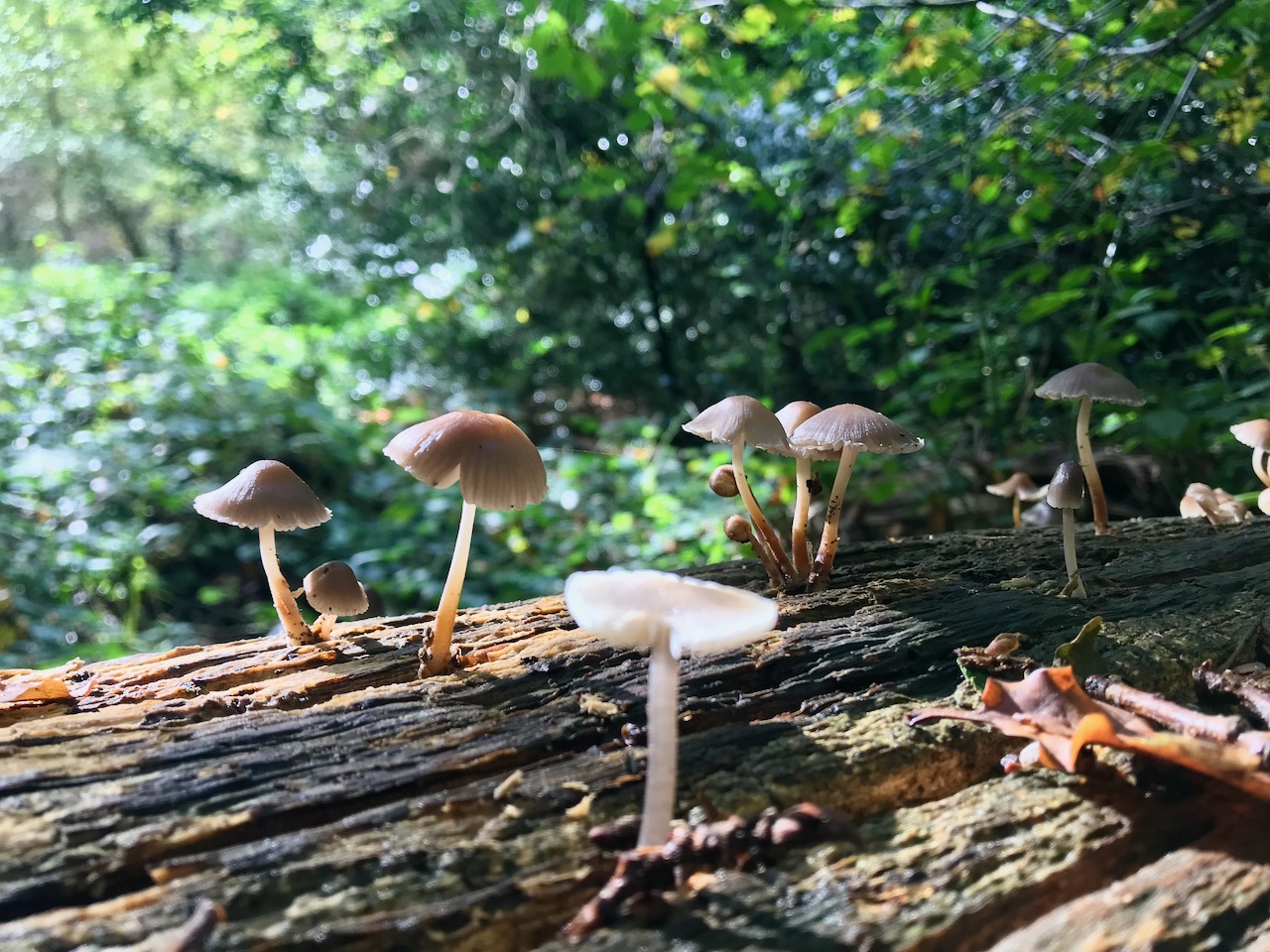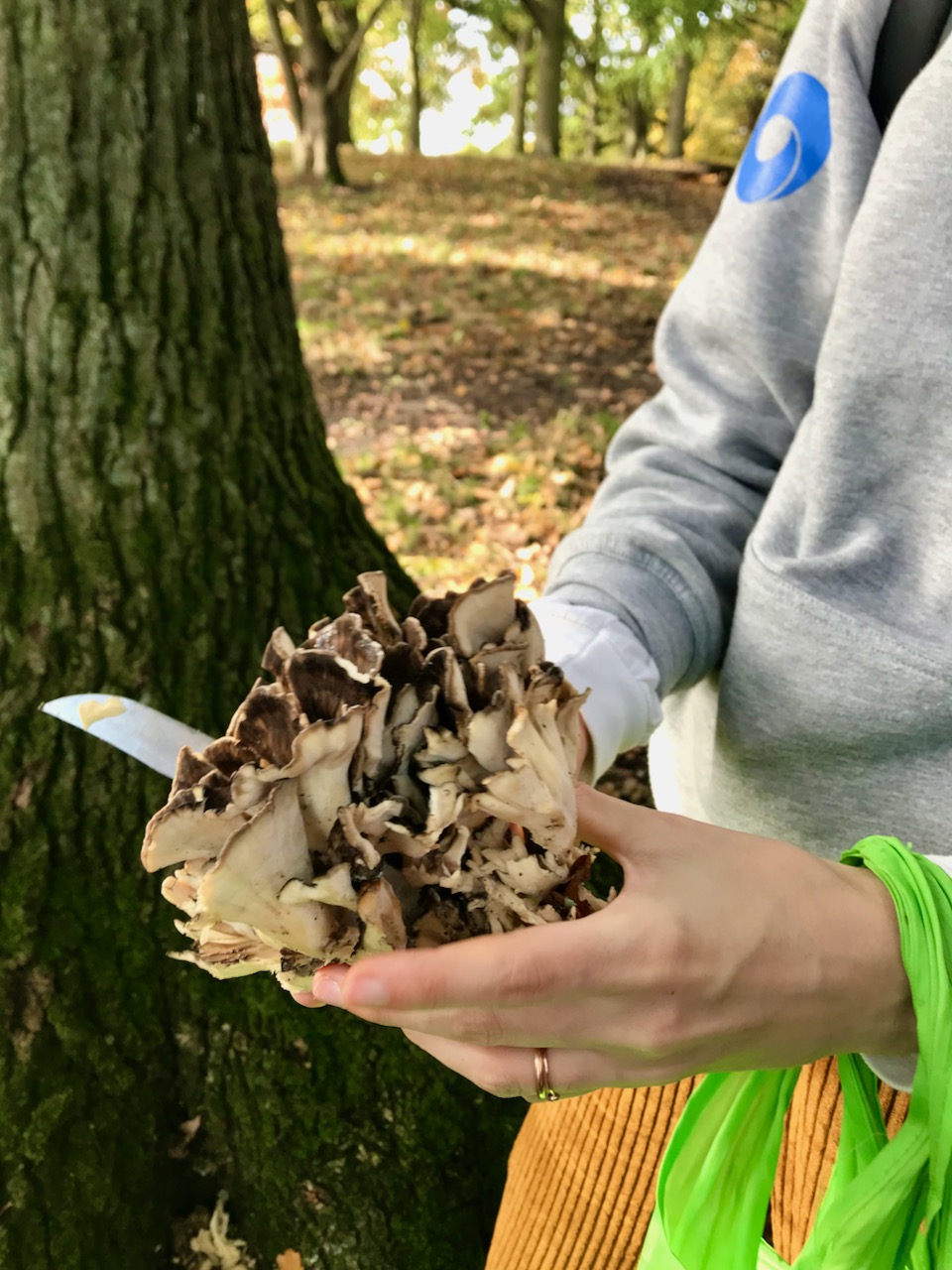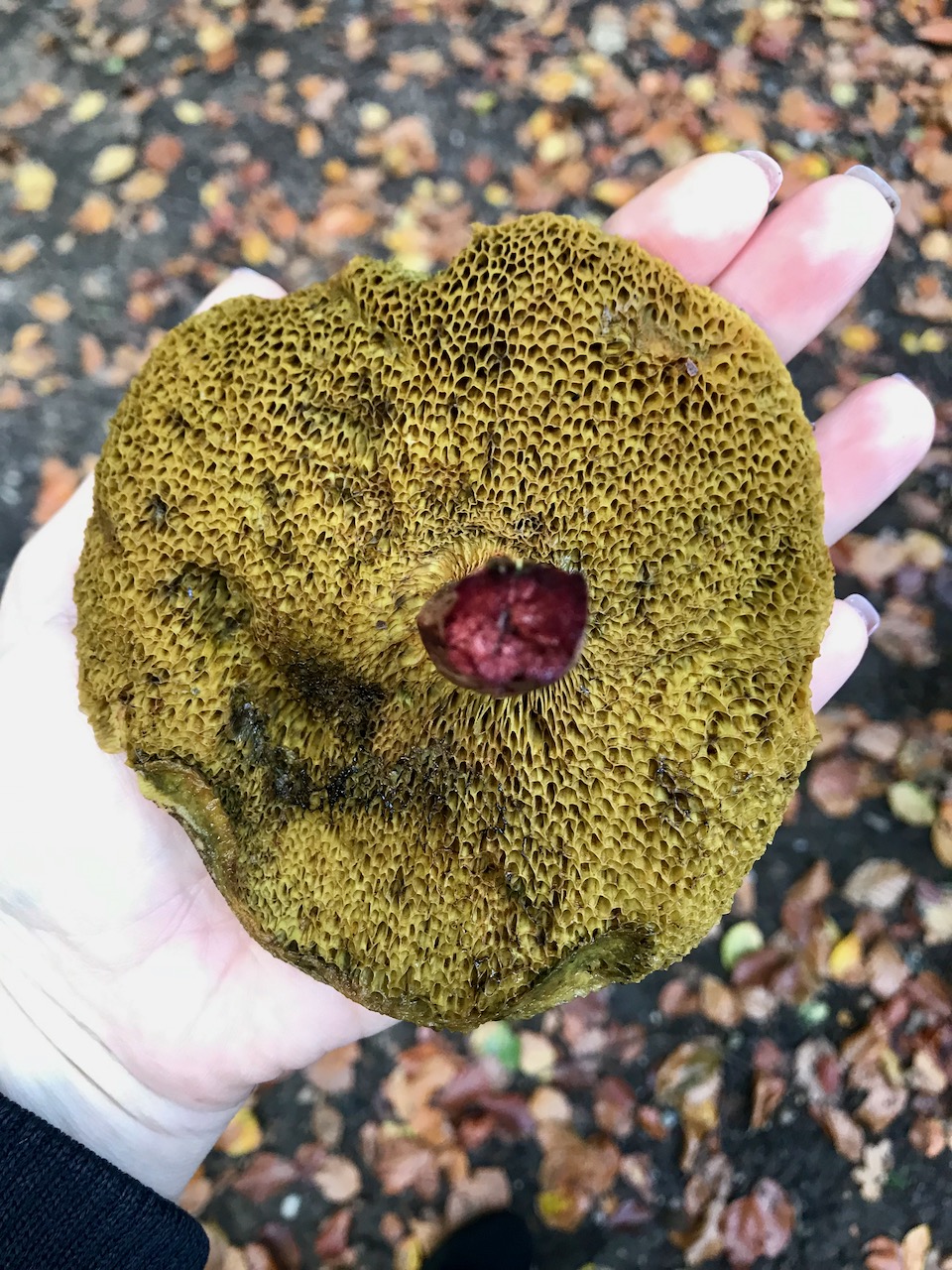— Mushroom season
October is mushroom season! Last Saturday was particularly bright and sunny after a few days of rain, which is perfect for mushrooms. We went to Hampstead Heath with a few friends who forage mushrooms regularly.

We were lucky and found so many different varieties including honey fungus, black-staining polypores, laughing gym, curry-scented milkcap, fruity brittlegill, porcelain fungus, shaggy scalycap and the iconic fly agaric. Most of these were either inedible or poisonous, so we left them alone after identifying them. Some, like the honey fungus, are edible but we didn’t pick them because we found so many other “choice” mushrooms.

The tastiest find of the day was this hen of the woods. We also found some charcoal burners, parasols, cauliflower fungus and red cracked bolete, which we cooked and ate the next day (after extensive rounds of verification and double-checking.)
I enjoy the process of finding mushrooms in itself, even if we didn’t eat them afterwards. It’s all about paying careful attention. It requires a different way of looking: soft, out of the corners of your eyes. There are certain trees, like beech and oak, where they’re more likely to grow around. Once you learn how to see them, it’s like unlocking a hidden visual layer on the world. Suddenly, there are mushrooms everywhere.

To identify the species, you need to pay even closer attention, examining the mushroom’s structure, shape, texture, gills and smell. I’m following Emergence Magazine’s Writing From the Roots course at the moment and identifying mushrooms reminds me of some of the writing exercises we’ve done: gradually zooming in on something and describing it in closer and closer detail each time.
It takes loads of practice to safely forage mushrooms and I’m not sure we would have eaten any without the guidance of our friends. They recommended two apps for identifying mushrooms: Picture Mushroom and Shroomify. I’ve heard that Mushrooming with Confidence is a really useful identification guide that only includes mushrooms that aren’t easy to mix up with a poisonous doppelgänger. There are also good videos online by Wild Food UK.
🍄